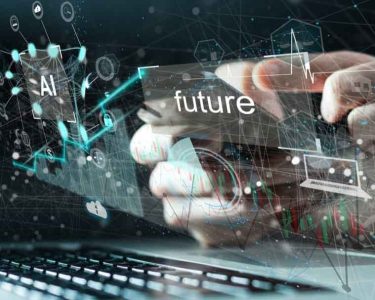In an age dominated by AI Triangle & rapid technological changes, managing the process of software migration can be challenging. However, a new approach changes the situation, providing hope for enterprises looking to modernize without the burdensome effort required in the past. Let’s delve into this innovative strategy built around three essential AI capabilities: code translation, developer productivity tools and retrieval augmented generation (RAG).

Legacy systems are often integrated within existing business processes, making their discontinuation disruptive and potentially catastrophic. Companies can witness the complexities of migrating foundational systems laden with decades of accumulated knowledge. The rise of advanced AI tools simplifies the modernization process and reduces the disruptions commonly seen with traditional migration methods.
Unpacking The AI Triangle
The first leg of the innovation strategy is code translation, a significant leap in the AI-driven modernization of legacy systems. This process involves converting source code into modern programming languages.
Contrary to being considered outdated, code translation has undergone a revival. Now, it’s feasible and efficient, thanks to various technologies capable of performing translations with remarkable accuracy. Numerous companies have recognized this technology’s potential, developing their own proprietary code translators to cater to specific needs. However, converting the source code into a new language is just the beginning; it paves the way for further advancements such as containerization and transitioning to serverless architectures.
Developer productivity tools play a crucial role in enhancing software engineers’ capabilities by identifying patterns, suggesting optimizations and facilitating the efficient utilization of libraries and frameworks. These tools assist in the refactoring and coding processes. They help with mundane tasks and coding and reduce cognitive load so developers can focus on ensuring the modernized system is functional and fine-tuned for optimal performance.
Their role is critical in transitioning from monolithic architectures to service-based solutions, supporting individual and collaborative projects across multiple repositories. These tools boost productivity and foster a unified approach to development. Additionally, they reduce the need for manual interventions in updating contracts or defining data transfer objects.
The final cornerstone of this strategy is the retrieval augmented generation (RAG), a dynamic AI-driven tool that acts as a robust digital handbook. It navigates, retrieves and references an extensive knowledge base, offering developers and architects instant access to critical information ranging from code structures to policy guidelines. This tool is essential for bridging knowledge and context gaps that commonly arise when one is modernizing systems that were developed decades ago.
RAG proves invaluable in scenarios where systems were developed by individuals who understood their intricacies well. As these systems age and their architects move on, RAG can fill the void by providing insights based on documentation, code comments and even stakeholder proposals, feeding this comprehensive dataset into an AI to support developers in real time.
Moreover, RAG aids in onboarding new team members. By incorporating all available information into RAG, searching for and understanding project nuances becomes simpler, streamlining knowledge transfer and boosting team efficiency.
Integrating AI into the software migration process is not merely a technical upgrade but a paradigm shift in how projects are approached and executed. By reducing the transformation duration and significantly cutting down on associated risks and costs, this AI triangle strategy redefines the boundaries of what’s possible. This innovation is particularly pivotal for projects transitioning from legacy mainframes, where the reduction in time and resources can translate into millions in savings.

Implementing The AI Triangle Strategy
This particular AI initiative should not outgrow or derail the transformation that you are undertaking. It’s advisable to find a partner that can quickly run PoCs and hackathons and measure the impact of code translation tools within a three-to-four-week evaluation period. Focus on measurable indicators, such as the direct time saved in language conversion, while also considering the subjective part—even if the team has to do significant refactoring.
Expectation management is crucial when integrating developer productivity assistants. Acknowledge the learning curve (approximately four weeks) to gather substantial evidence and form opinions. Not all engineers may find AI assistants beneficial, yet some could report significant value. With more than one on the market, experimenting with at least a couple and evaluating the feedback of your developers on their relevance to your codebase is recommended. Such proactive investment might positively impact the culture of innovation and accelerate development velocity over the mid to long term.
A similar approach applies to RAG. Avoid creating new challenges that could hinder the transformation by evaluating readily available products on the market. Major platforms offer RAG accelerators or ready-to-use solutions. Surprisingly, the evaluation process can be concise—literally two days of work, from documentation to a chatbot, and half of which is spent on presentations. Even if you assemble your own knowledge base, its first versions should take at most three to five weeks of work.
Looking Ahead
The integration of AI into software development is at a crucial stage. AI tools are not poised to replace developers; they offer a competitive edge to those who use them effectively. This can take different forms: doing things a bit faster, reducing the time of onboarding new engineers, saving energy on mundane coding and focusing on the real issues, and attracting high-quality, forward-looking and creative developers. As we progress, the panorama is set to expand, providing solutions like AI-driven co-pilots for containerizing applications and managing infrastructure.
The evolution will not stop here. The introduction of AI in site reliability engineering (SRE) promises to alleviate the workload involved in operations such as log analysis, metric evaluation and anomaly detection. This shift hints at a future where AI tools could automate disaster recovery and ensure high availability, potentially forming a new cornerstone in software development strategy. Additionally, the prospect of AI tools that can predict and alert about financial anomalies in cloud spending emphasizes the vast potential to simplify development practices and operational efficiencies.
This direction indicates a growing domain where AI’s role in enhancing infrastructure management and operational reliability could redefine how we approach software development and maintenance.




